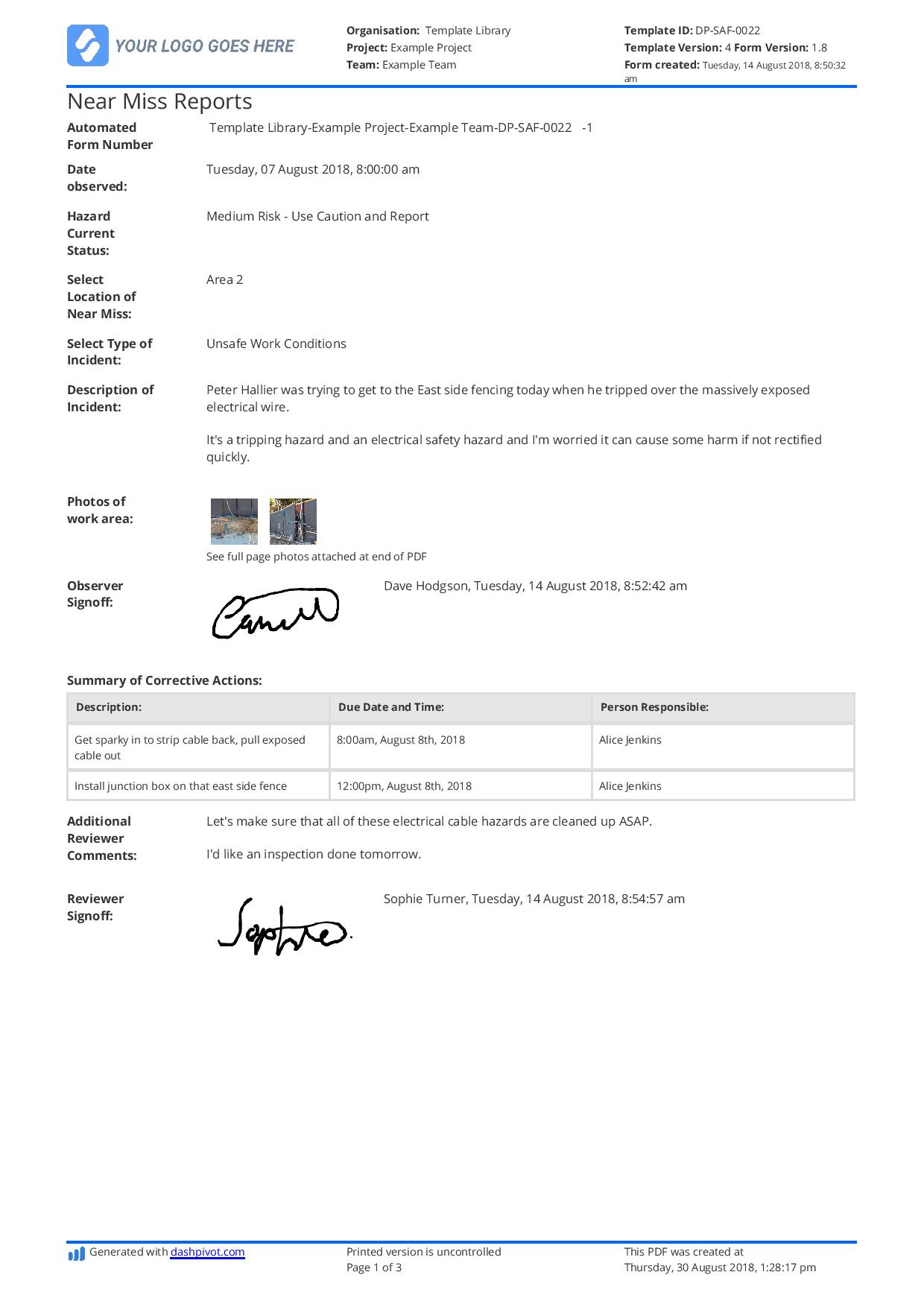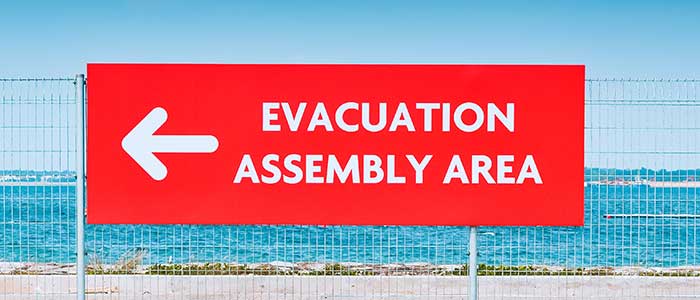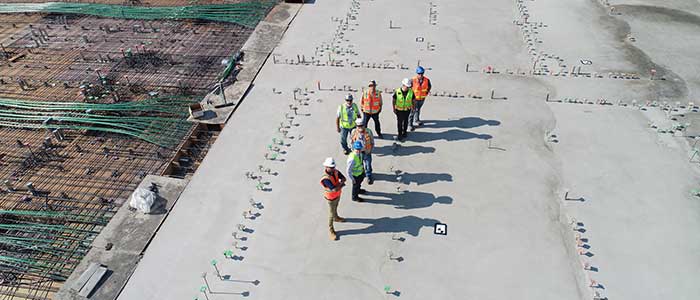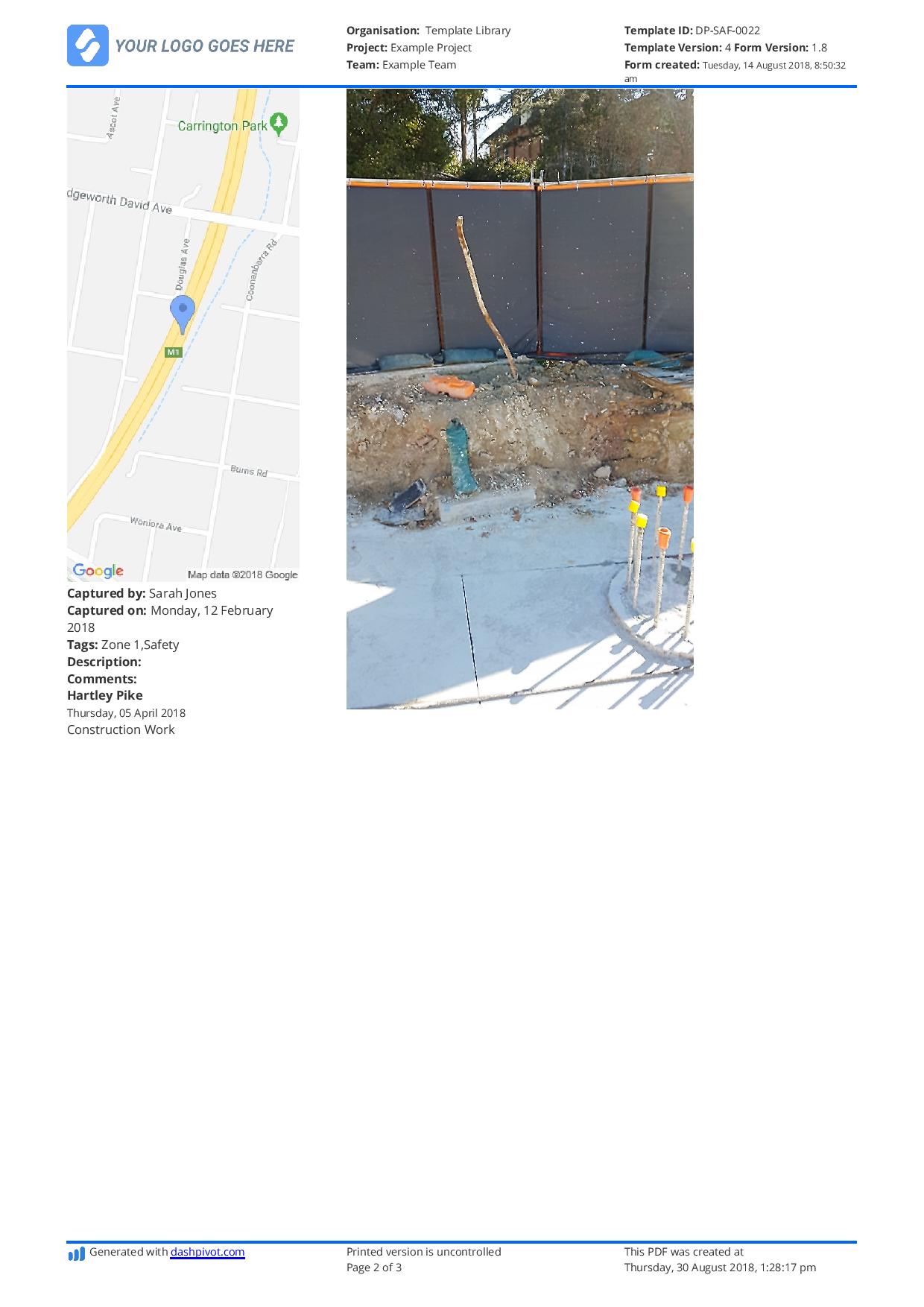Dashpivot article page – is a near miss reportable under RIDDOR
Is a Near Miss Reportable Under RIDDOR?
In this article, we answer the question, "Is a near miss reportable under RIDDOR?" in detail, as well as provide you with some free and proven resources for near miss reporting in general.

What is RIDDOR and What Does it Require?
RIDDOR is short for Reporting of Injuries, Diseases and Dangerous Occurrences Regulations and is a UK law that mandates all employers, self-employed individuals, and anyone who lead work premises to keep all records of work-related incidents, injuries, accidents, diseases, and any dangerous situations and report them. Given it's a regulation, one of the first question any company or safety oriented person typically asks is - is a near miss reportable under RIDDOR?
RIDDOR investigates these occurrences to enhance the organisations' workplace safety and prevent harm of employees and workers. They protect workers and improve the safety standards.
What Types of Incidents are Reportable Under RIDDOR?
RIDDOR requires the reports of the following (some) below and more information can be found in the HSE official website.
Reportable Injuries Under RIDDOR
A death of an employee (excluding suicide) should be reported if it was caused by a work-related accident. Additionally, if an employee dies due to a work-related injury within a year (365 days), this is considered as a reportable fatality. For a self-employeed individual, it is not necessary to report the death if the incident occurs in the premises where they are the sole owner.
There are specified and reportable injuries under the Regulation 4 of RIDDOR. These are fractures, amputation, an injury likely to cause permanent blinding, crush injury, burns, scalping, loss of consciousness, injuries happening in an enclosed space, and many more.
If an employee or self-employed individual is unable to go to work or perform work duties due to a work-related accident for seven consecutive days, they must be reported and is referred to as over-7-day incapacitation of a worker.
If the public or non-employees such as customers or volunteers are exposed to an accident, they must be reported if it involves work activity, it results in an injury, and if the person is immediately being taken to the hospital after the accident. The reports should include treatment including dressing, stitches, plaster cast, or surgery. There is no need to report under RIDDOR if there is no obvious injury.
Occupational Diseases
Employers and self-employed individuals must report if any of the employees are diagnosed by certain occupational diseases caused or worsened by their job such as tendonitis, hand-arm vibration syndrome, carpal tunnel syndrome. The HSE outlines all the occupational diseases in their official website.
Dangerous Occurrences
Not all dangerous occurrences need to be reported under RIDDOR. These are occurrences that could pose as a potential hard to others and reporting them doesn’t really require any complex analysis or explanation. The reporter can simply write down their reasonable assessment and judgement whether the incident caused a risk of harm. The HSE outlines all the dangerous occurrences in their official website.
Gas Incidents
If any person in the workplace has died, lost consciousness, or been rushed to a hospital due to gas-related incidents must be reported.
Is a near miss reportable under RIDDOR?
For most cases, a near miss is not reportable under RIDDOR. To clarify, a near miss report shouldn’t automatically be submitted as a report to RIDDOR unless they meet the criteria under the RIDDOR requirement of dangerous occurrences. A standard near miss that doesn’t meet the criteria of dangerous occurrences is not reportable under RIDDOR.
Why is Near Miss Reporting Essential Even if it’s Not RIDDOR-Reportable?
Even though not all near misses are reportable under RIDDOR, the organisation should still practice recording and documenting near misses internally. This practice is helpful for other compliances and audits, and if they meet the criteria as dangerous occurrences, the same near miss report can be used as a guide or supporting document to report to RIDDOR.
Implementing a near miss reporting culture also fosters a safety and accountability culture within the organisation. Near miss reporting is essentially helpful for risk management, identifying potential hazards and poor safety practices, and preventing acutal accidents, harm, and damages. This practice helps the organisation gain valuable insights to potential hazards, and is especially contributive to the purposes of RIDDOR.
Near miss reporting is still essential even if it’s not RIDDOR-reportable to prevent future RIDDOR-reportable events. The organisation will be able to mitigate hazards with this proactive initiative. By reporting near misses and addressing them as early on, organisations will be able to reduce the likelihood of incidents escalated into RIDDOR-reportable incidents.
Reporting near misses doesn't have to be hard for your team. If you have standardised near miss reporting template and structure like the below and an easy way for your team to access and document near misses, it should be quick and seamless.

For your next near miss reportable under RIDDOR, use this near miss report form.
What Are the Consequences of Not Reporting Under RIDDOR?
Given that a near miss report meets the criteria to be reported under RIDDOR, if an organisation fails to report incidents under RIDDOR, there could be legal and financial consequences.
An organisation would fail to obtain additional safety measures and data set by the RIDDOR which will be helpful in mitigating those risks and hazards, which also in turn would increase the chances an accident might occur in the workplace. If the near miss that is also considered as a dangerous occurrence is not reported, undiscovered hazards may not be identified and this might cause harm and serious incidents.
If an organisation fails to report dangerous occurrences often, the HSE might require more detailed investigations and more frequent inspections, which are time-consuming and costly.
Lastly, there could be legal penalties, fines, and worst case, prosecutions, failure to comply with RIDDOR. The HSE can the capability to impose fines for near misses or dangerous occurrences not being reported.

Hazard Report template
Document and report hazards quickly and thoroughly to keep everyone safe.

Safety Improvement Plan template
Create coherent, actionable and professional safety plans using this proven framework.

Safety Toolbox Talk template
This toolbox talk template is quick and easy to complete and signoff on site, and keeps all of your toolbox talks neatly organised and professional.

